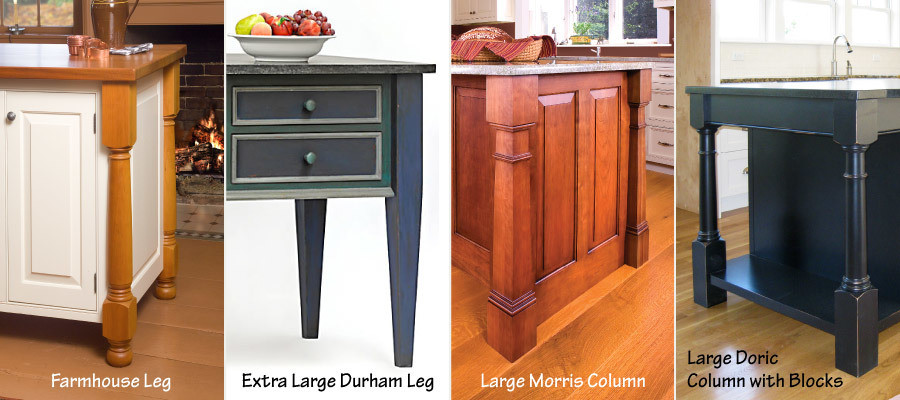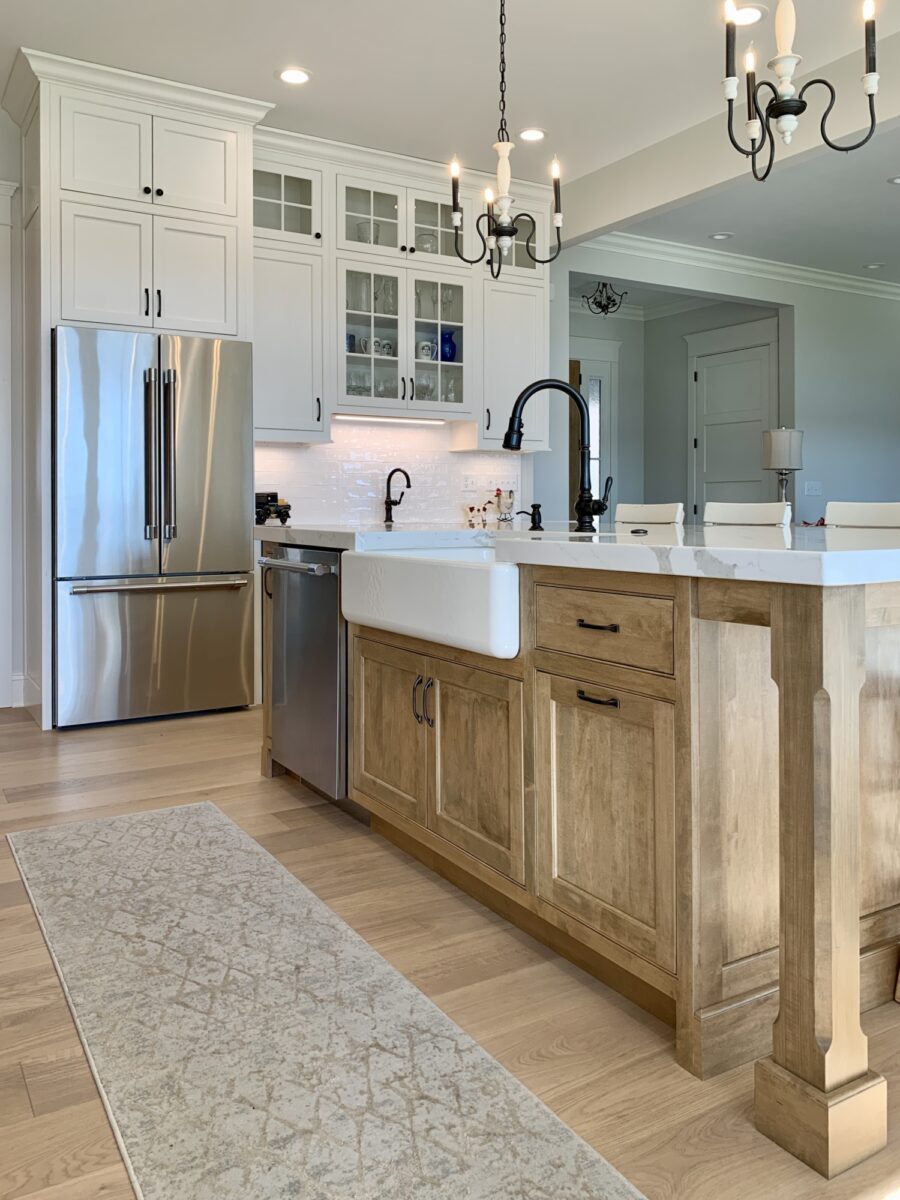A Guide to Picking the Suitable Cooking Area Island for Your Home
Choosing the best cooking area island is a multi-faceted choice that can considerably impact both the capability and looks of your home. Comprehending your kitchen's spatial dynamics is the preliminary step, guaranteeing that the island fits seamlessly without interfering with the circulation. Past area factors to consider, recognizing the key objective of the island-- be it for meal prep work, dining, or added storage space-- is essential. The option of surfaces and materials additionally plays a vital function in balancing the island with your kitchen's overall design. As we explore these components even more, the nuances of each decision will certainly come to be clear.
Assessing Your Area
Before selecting a kitchen island, it is important to completely evaluate your space to make sure the enhancement will certainly be both practical and visually pleasing. Begin by determining the available area, including the size, size, and height of the kitchen area. Accurate measurements are crucial to avoid buying an island that overwhelms the area or one that is disproportionately tiny.
Think about the existing layout and exactly how the island will integrate with the existing web traffic flow. A well-placed island ought to not obstruct paths or impede access to necessary appliances, such as the fridge, sink, and cooktop. Leave appropriate clearance space-- commonly around 36 to 48 inches on all sides-- to allow for comfortable movement and office performance.
Following, examine the natural light and sightlines within your kitchen. An island that blocks a home window or interferes with aesthetic communication can make the area really feel dark and cramped. Believe concerning how the island's placement will affect lights and exposure, ensuring it boosts instead than diminishes the cooking area's ambiance.
Identifying the Purpose
Establishing the function of your kitchen area island is a vital action in ensuring it meets your particular requirements and choices. Prior to diving right into style or size considerations, it is important to clarify what main function the island will certainly offer in your kitchen area. Will it be a central center for dish preparation, a casual eating location, or perhaps an additional storage space remedy?
For those who appreciate cooking, incorporating appliances such as a cooktop or sink might be needed. Furthermore, adequate counter space for chopping and blending, in addition to accessible storage for kitchen devices and ingredients, can change the island into a reliable workstation. Alternatively, if the island is intended to assist in social communications or serve as an eating location, seating setups end up being vital. In this instance, making sure adequate legroom and surface area for comfy dining experiences is vital.

Picking the Right Dimension
Selecting the best size for your kitchen area island is an equilibrium of performance and room optimization. A suitable kitchen island ought to give sufficient work area while making sure that activity around the kitchen continues to be unobstructed. Begin by determining your cooking area space; a minimum clearance of 36 to 42 inches around the island is necessary to permit comfortable motion and accessibility.
The dimensions of the island should mirror its intended usage. If the island will certainly offer largely as a prep area, a size of 24 to 36 inches might be adequate.

Last but not least, make sure that the island's dimension matches the total kitchen area format, preventing any type of overwhelming existence that could diminish the kitchen area's visual and utility - kitchen island legs. Careful planning and exact measurements will help you achieve a reliable and unified cooking area setting
Picking Products and Finishes
After identifying the ideal size for your kitchen island, the following step involves choosing ideal materials and surfaces. The option of materials substantially impacts both the visual charm and performance of your cooking area island. Popular materials for counter tops include butcher, granite, and quartz block, each offering distinct benefits. Granite, known for its resilience and ageless sophistication, is very resistant to scratches and heat. Quartz, an engineered stone, offers a non-porous surface area that withstands spots and germs. Butcher block, made from wood, adds a warm, rustic appeal and is suitable for food preparation.
In addition to the kitchen counter, consider the products for the space station. Strong timber offers a traditional, sturdy appearance, while stainless-steel gives a smooth, contemporary appearance and is easy to clean. Repainted link surfaces can present a splash of shade, with choices ranging from muted pastels to strong, lively tones.
Pay interest to the toughness of surfaces, especially in high-traffic areas, to preserve the island's look over time. Picking the right materials and surfaces will improve both the functionality and visual allure of your kitchen island.
Integrating Practical Functions
Including useful attributes right into your kitchen area island can considerably enhance its energy and comfort, transforming it right into a versatile focal point of your cooking area. One necessary attribute to consider is additional storage space. Integrating cupboards, cabinets, and open shelving can supply much-needed space for kitchenware, tools, and little appliances, helping to preserve a clutter-free atmosphere.
One more valuable addition is a built-in sink or cooktop, which can improve dish preparation and clean-up procedures. A sink can facilitate tasks such as washing veggies and cleansing dishes, while a cooktop can allow for food preparation straight on the island, promoting a more social and interactive food preparation experience.
Think about including seating alternatives, especially if your kitchen area increases as an informal eating location. Bar stools or integrated benches can transform the island into a multifunctional space for dishes, homework, or informal celebrations.
Last but not least, integrating electric outlets into your cooking area island can enhance its functionality. Outlets give useful link practical gain access to for small kitchen area appliances, billing stations for electronic gadgets, and extra lighting alternatives.
Verdict

Before picking a kitchen island, it is important to thoroughly analyze your room to guarantee the check addition will certainly be both useful and cosmetically pleasing.Picking the best dimension for your kitchen area island is an equilibrium of performance and room optimization. kitchen island legs. A perfect kitchen area island should offer sufficient work space while ensuring that movement around the kitchen continues to be unimpeded.Including practical features right into your cooking area island can significantly boost its utility and ease, transforming it into a flexible focal point of your kitchen.In conclusion, selecting the suitable kitchen area island necessitates a thorough analysis of the available area, clarity regarding its key feature, and mindful consideration of the proper size and materials